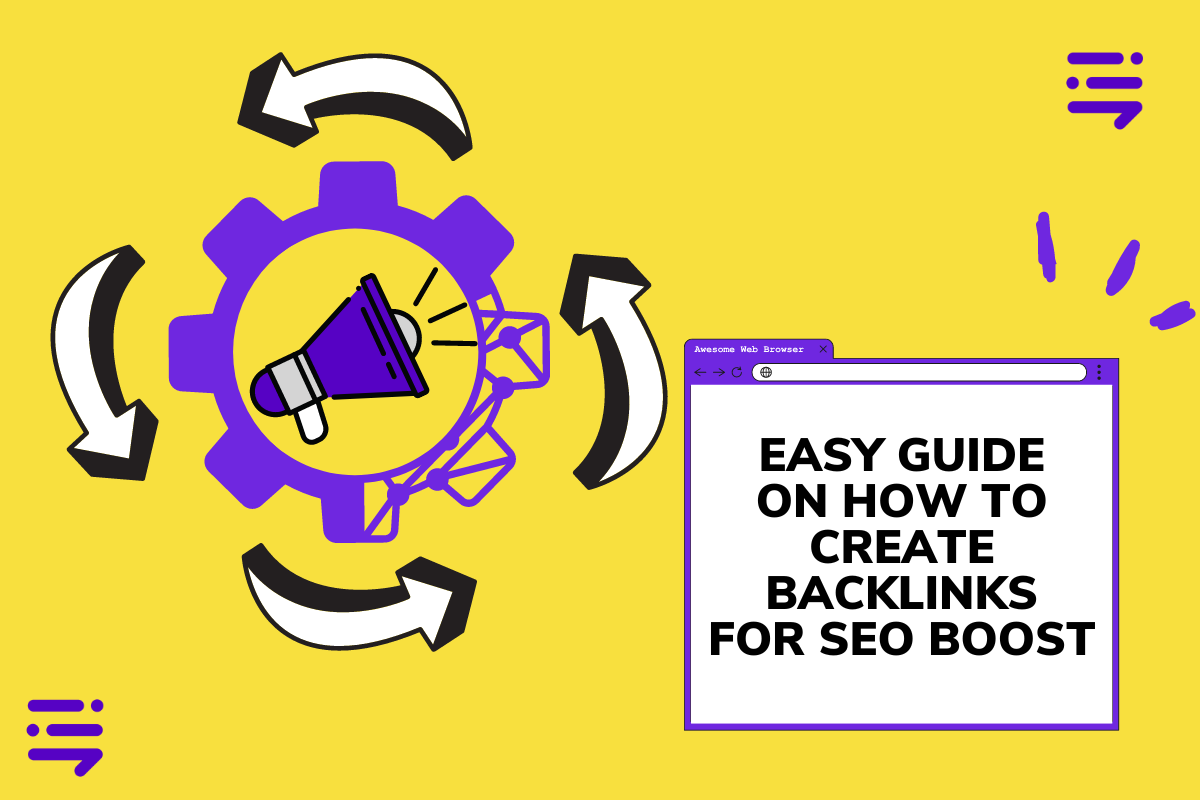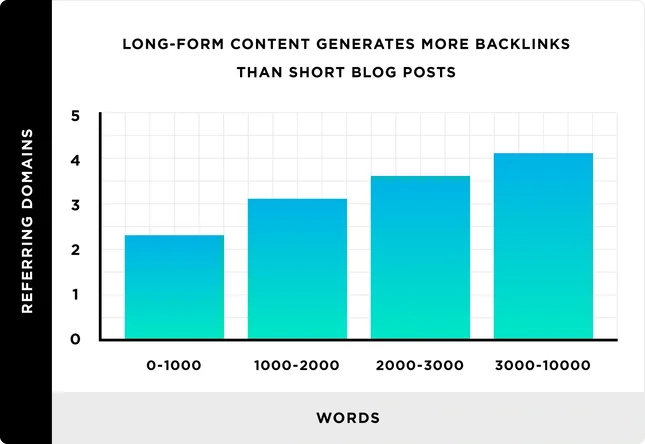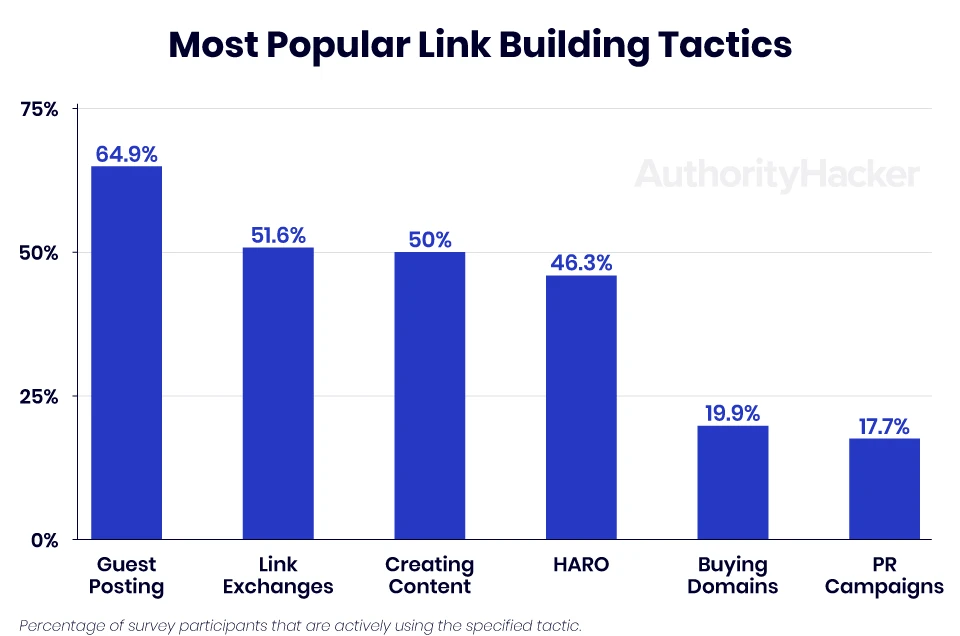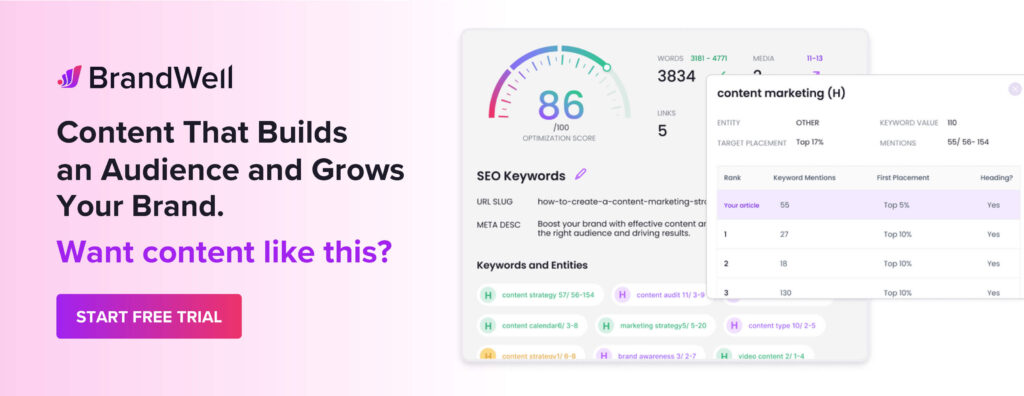Discover top guides, trends, tips and expertise from AIO Writers
Easy Guide on How to Create Backlinks for SEO Boost
Julia McCoy
Thursday, 11th Apr 2024
Ever wondered why some websites seem to have the Midas touch, ranking high on Google search effortlessly? It often boils down to one thing — mastering the art of building quality backlinks.
If you’ve been scratching your head over how to create backlinks that elevate your website from the depths of unseen web pages to the spotlight of Google’s first page, worry no more. This guide isn’t just about throwing a bunch of links across the internet; it’s about crafting connections that count.
The journey begins with understanding what makes a link valuable and ends with actionable strategies that are as straightforward as they are effective. Whether you’re new on this path or looking for refined tactics, stick around because we’re breaking down how to create backlinks into digestible pieces.
Table Of Contents:
- Essential Steps to Build Quality Backlinks
- Top Strategies for Generating High-Quality Backlinks
- Avoid These Common Backlinking Mistakes
- Measuring the Success of Your Backlinking Efforts
- FAQs – How to Create Backlinks
- Conclusion
Essential Steps to Build Quality Backlinks
So, you want to learn how to create backlinks to boost your SEO. But where do you even begin?
Here are four essential steps for beginners.
Step 1: Identify Link Opportunities
First things first: you need to find relevant websites and blogs in your niche that might be open to linking to your content.
How? Try these tactics:
- Use tools like Ahrefs or Moz to analyze your competitors’ backlink profiles and identify their top referring domains.
- Search for industry keywords + “write for us” or “become a contributor” to find sites that accept guest posts.
- Set up Google Alerts for your brand name and target keywords to get notified when you’re mentioned across the web (perfect opportunities to reach out and request a link.).
Step 2: Create Link-Worthy Content
If you want to attract links, you need to give people a reason to link to you. That means creating high-quality, valuable blog posts that other sites will want to reference and share with their audience.
What types of content tend to generate the most backlinks? Think along the lines of:
- Original research and data
- In-depth ultimate guides
- Engaging infographics
- Controversial thought-leadership pieces
The key is to create something unique and truly helpful — content so good that people can’t help but link to it.
Step 3: Reach Out to Website Owners
Creating amazing content is only half the battle. For maximum link-building success, you need to take a proactive approach and put your content directly in front of the right people.
Whenever you publish a new piece you think might be link-worthy, make a list of site owners and influencers who might be interested in it. Then, reach out with a friendly, personalized email to let them know about it.
No, I’m not talking about spamming people with generic link requests. Link-building email outreach is all about sending a thoughtful message explaining why you think their audience would appreciate your content, and politely asking if they’d consider linking to it.
Step 4: Monitor and Analyze Results
Finally, don’t forget to regularly monitor your backlink profile to track your progress and make sure you’re earning the right kinds of links.
Tools like Google Search Console and Ahrefs can show you your latest links and referring domains. If you spot any shady or low-quality links, you can request for backlink removal or disavow them using Google’s disavow tool.
You can check out our Best Link Building Tools to analyze links that are pointing to your site.
Pay attention to your organic traffic and keyword rankings too. If your link-building is working, you should start to see positive impacts over time. Just remember — building quality links is a marathon, not a sprint.

Top Strategies for Generating High-Quality Backlinks
Now that you know the basics of link building, how do you attract those amazing inbound links?
Here are some link-building strategies to consider.
Guest Blogging on Relevant Websites
One of the most effective ways to land quality backlinks is through guest post writing. This involves writing articles for other blogs in your industry, in exchange for a link back to your site in your author bio.
The key is to only write guest blog posts for reputable, relevant sites. Don’t waste your time writing for spammy, low-quality blogs just to get a link. Focus on sites your target audience actually reads and trusts.
Not sure how to find guest blog post opportunities? Try searching for your keyword + “write for us” or “guest post guidelines”. You can also use BuzzSumo to find the most popular content in your niche, then reach out to those sites about contributing a guest post.
Broken Link Building
Broken link building is like the secret ninja technique of link building. It involves finding broken links on relevant sites and then reaching out to the site owner to suggest your content as a replacement.
Why does this work? Because site owners are usually happy to replace broken links with working ones, especially if your content is high-quality and relevant to their audience.
To find broken link opportunities, use a tool like Ahrefs Broken Link Checker. Then, create content that would make a good replacement for those broken links, and reach out to the site owner with your suggestion.
Creating Skyscraper Content
Want to really wow potential linkers? Try creating skyscraper content.
This is content that takes what’s already out there and makes it 10x better.
For example, if someone wrote a list of “10 SEO Tips”, you could create “100 Insanely Good SEO Tips for Immediate Results”.
The goal is to create something so comprehensive and valuable that people can’t help but link to it.
To do this:
- Find popular content in your niche using BuzzSumo.
- Put your own unique spin on it and make it significantly better.
- Reach out to people who linked to the original content and let them know about your upgraded version.
Design Link-Worthy Infographics
Infographics are like link-building magnets. They’re highly shareable and can help you attract links from a variety of sources.
To use infographics for link building:
- Create an eye-catching, data-driven infographic on a topic relevant to your niche.
- Optimize it for the keywords you want to rank for.
- Include an embed code so other sites can easily share it.
- Reach out to bloggers and influencers in your space and offer them the infographic to share with their audience.
Just make sure your infographic design is professional and the information is accurate. You want people to link to it because it’s genuinely useful, not just because it looks pretty.
Writing Testimonials
Writing testimonials for products or services you use is an often overlooked backlinking strategy. Many companies have a dedicated testimonials page where they feature reviews from happy customers.
By writing a detailed, glowing testimonial, you may be able to score a link back to your site. Just reach out to the company and ask if they accept testimonials. If they do, craft your review and be sure to include a link to your website.
Pro tip: To increase your chances of getting your testimonial (and link) accepted, try to build a relationship with the company first. Engage with them on social media, comment on their blog posts, and show that you’re a true fan of their brand.
Participating in Interviews
Want to get your name (and website) in front of a new audience? Try participating in interviews.
This could mean being a guest on a popular podcast, writing an expert roundup post, or being featured in an interview on another blog. The key is to find opportunities that are relevant to your niche and will put you in front of your target audience.
To land interview opportunities, try:
- Searching for “expert roundup” + your keyword
- Pitching yourself as a podcast guest to shows in your industry
- Responding to relevant journalist requests
Whenever you do an interview, be sure to ask for a link back to your site. Most people will be happy to oblige, especially if you’ve provided a ton of value in your responses.

Avoid These Common Backlinking Mistakes
When it comes to building backlinks, there are a lot of mistakes you can make. And trust me, I’ve made them all.
But you don’t have to learn the hard way like I did. I’m here to share the most common backlinking mistakes so you can avoid them and focus on building high-quality, relevant links that will actually help your site rank.
Focusing on Quantity Over Quality
One of the biggest mistakes people make is focusing on the number of backlinks rather than the quality. They think the more links they have pointing to their site, the better.
But that’s not how it works. In fact, having a bunch of low-quality, spammy links can actually hurt your rankings. Search engines like Google are smart enough to know the difference between a good link and a bad one.
Instead of trying to get as many links as possible, focus on getting links from high-authority, relevant websites. A single link from a reputable site in your niche is worth way more than 100 links from random, low-quality sites.
Ignoring Relevance
Another common mistake is ignoring the relevance of the linking site. Just because a site has a high domain authority doesn’t mean it’s a good fit for your content.
For example, let’s say you have a website about dog toys. A link from a high-authority site about car parts isn’t going to do much for you, even if that site has a DA of 90+.
When building links, always prioritize relevance over authority. Look for sites that are in your niche or closely related to your topic. Those are the links that will send targeted traffic to your site and help you rank for your keywords.
Overusing Exact Match Anchor Text
Anchor text is the clickable text in a hyperlink. Back in the day, it was common practice to use your exact target keyword as the anchor text for every link.
But those days are long gone. Now, overusing exact match anchor text can trigger a Google penalty because it looks unnatural and spammy.
Instead, use a variety of anchor text phrases that are relevant to your content. Mix it up with the page title, brand name, and natural phrases like “click here” or “read more.”
The key is to make your anchor text look natural and diverse, not like you’re trying to game the system.
Participating in Link Schemes
Link schemes are any attempt to manipulate rankings by building artificial or low-quality links. This includes things like link farms, private blog networks (PBNs), and buying or selling links.
Participating in link schemes is a huge no-no in Google’s book. If you get caught, you could face severe penalties, including being completely removed from search results.
Here’s what Google has to say about link schemes:

Instead of looking for shortcuts, focus on creating link-worthy content that naturally attracts links. Reach out to relevant sites in your niche and build relationships with other bloggers and influencers.
Building high-quality links takes time and effort, but it’s the only way to do it if you want sustainable, long-term results.
Measuring the Success of Your Backlinking Efforts
So you’ve been working hard to build high-quality backlinks to your site. But how do you know if it’s actually working?
Measuring the success of your link-building efforts is crucial to making sure you’re on the right track.
Here are three key metrics to track:
1. Referral Traffic
Referral traffic is the traffic that comes to your site from links on other websites. It’s a good indicator of how effective your link-building efforts are.
To track referral traffic, you can use a tool like Google Analytics. Just go to Acquisition > All Traffic > Referrals to see which sites are sending you the most traffic.
If you see a lot of traffic coming from relevant, high-authority sites, that’s a good sign that your link-building is working. On the other hand, if most of your referral traffic is coming from low-quality or irrelevant sites, you may need to adjust your strategy.
2. Search Engine Rankings
Another important metric to track is your search engine rankings for your target keywords. As you build more high-quality links to your pages, you should see your rankings improve over time.
You can use a tool like Google Search Console to track your rankings and see how they change as you build more links. Just keep in mind that rankings can fluctuate daily, so it’s best to look at long-term trends rather than obsessing over daily changes.
3. Domain Authority Growth
Domain Authority (DA) is a metric developed by Moz that predicts how well a website will rank in search results. It’s based on several factors, including the quantity and quality of links pointing to the site.
As you build more high-quality links to your site, your DA should increase over time. You can track your DA using tools like Moz’s Link Explorer.
Keep in mind that DA is a comparative metric, so it’s best to compare your DA to your competitors’ rather than obsessing over the absolute number. If your DA is increasing faster than your competitors, that’s a good sign that your link-building efforts are paying off.
Tracking these metrics will give you a good idea of how effective your link-building efforts are and where you may need to make adjustments. Just remember, building high-quality links takes time and patience. Don’t expect overnight results, but if you stay consistent and focus on quality over quantity, you’ll see the payoff in the long run.
FAQs – How to Create Backlinks
What is an example of a backlink?
A backlink could be a blogger mentioning your pie recipe and linking to it from their food blog.
How do SEO companies build backlinks?
SEO firms often write guest posts for other sites or use broken link building to secure links.
How do websites get backlinks?
Websites gain backlinks by creating stellar content that others want to share or reference in their own work.
How do I create local backlinks?
To snag local links, join area business directories or collaborate with nearby businesses on events and promotions.
Conclusion
While the process of creating backlinks can seem daunting, it is one of the most effective ways of significantly boosting your website’s visibility and authority.
By producing high-quality content, engaging in outreach efforts, and leveraging relationships with other website owners and influencers, you can cultivate a robust backlink profile that strengthens your SEO efforts.
Remember to prioritize relevance, diversity, and ethical practices in your link-building campaigns to ensure long-term success and avoid potential penalties from search engines.
With patience, persistence, and a commitment to quality, you can effectively create backlinks that drive organic traffic and elevate your online presence.

UNLOCK YOUR POTENTIAL
Long Headline that highlights Value Proposition of Lead Magnet
Grab a front row seat to our video masterclasses, interviews, case studies, tutorials, and guides.



